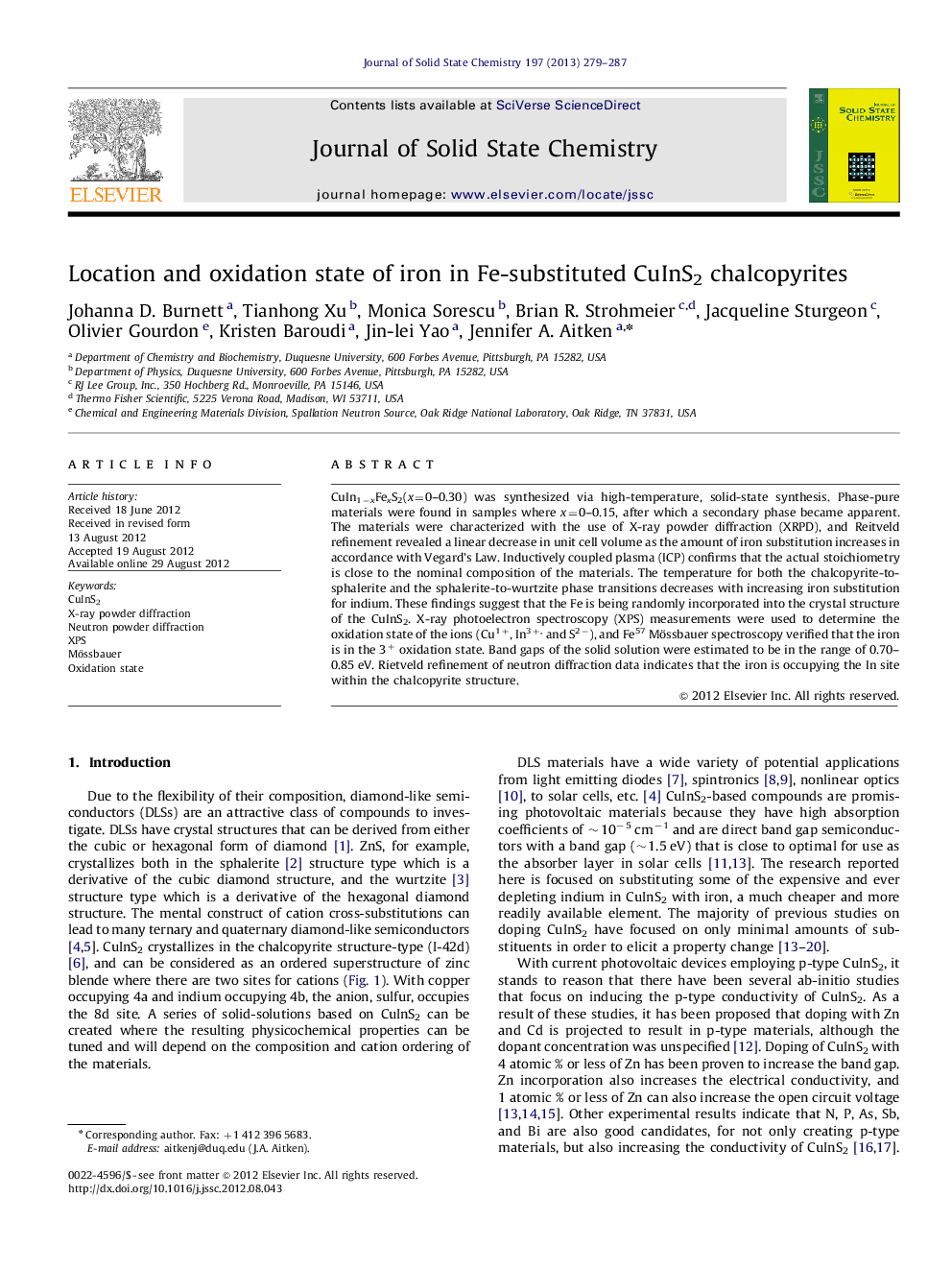| کد مقاله | کد نشریه | سال انتشار | مقاله انگلیسی | نسخه تمام متن |
|---|---|---|---|---|
| 1330107 | 1500119 | 2013 | 9 صفحه PDF | دانلود رایگان |

CuIn1−xFexS2(x=0–0.30) was synthesized via high-temperature, solid-state synthesis. Phase-pure materials were found in samples where x=0–0.15, after which a secondary phase became apparent. The materials were characterized with the use of X-ray powder diffraction (XRPD), and Reitveld refinement revealed a linear decrease in unit cell volume as the amount of iron substitution increases in accordance with Vegard’s Law. Inductively coupled plasma (ICP) confirms that the actual stoichiometry is close to the nominal composition of the materials. The temperature for both the chalcopyrite-to-sphalerite and the sphalerite-to-wurtzite phase transitions decreases with increasing iron substitution for indium. These findings suggest that the Fe is being randomly incorporated into the crystal structure of the CuInS2. X-ray photoelectron spectroscopy (XPS) measurements were used to determine the oxidation state of the ions (Cu1+, In3+, and S2−), and Fe57 Mössbauer spectroscopy verified that the iron is in the 3+ oxidation state. Band gaps of the solid solution were estimated to be in the range of 0.70–0.85 eV. Rietveld refinement of neutron diffraction data indicates that the iron is occupying the In site within the chalcopyrite structure.
CuIn1−xFexS2 samples were prepared by solid-state synthesis. X-ray photoelectron spectroscopy and Mössbauer spectroscopy indicate Cu+, In3+, Fe3+ and S2− in the samples. Rietveld refinement of neutron powder diffraction data shows Fe3+ residing on the indium site. The band gaps of the iron-containing samples decrease to ∼0.7 eV.Figure optionsDownload as PowerPoint slideHighlights
► X-ray photoelectron spectroscopy confirms the presence of Cu+, In3+ and S2−.
► Mössbauer spectroscopy indicates the presence of Fe3+.
► Rietveld refinement of neutron powder diffraction data shows iron on the indium site.
► The band gap decreases to ∼0.7 eV with only 5% iron substitution.
► Additional characterization is reported.
Journal: Journal of Solid State Chemistry - Volume 197, January 2013, Pages 279–287